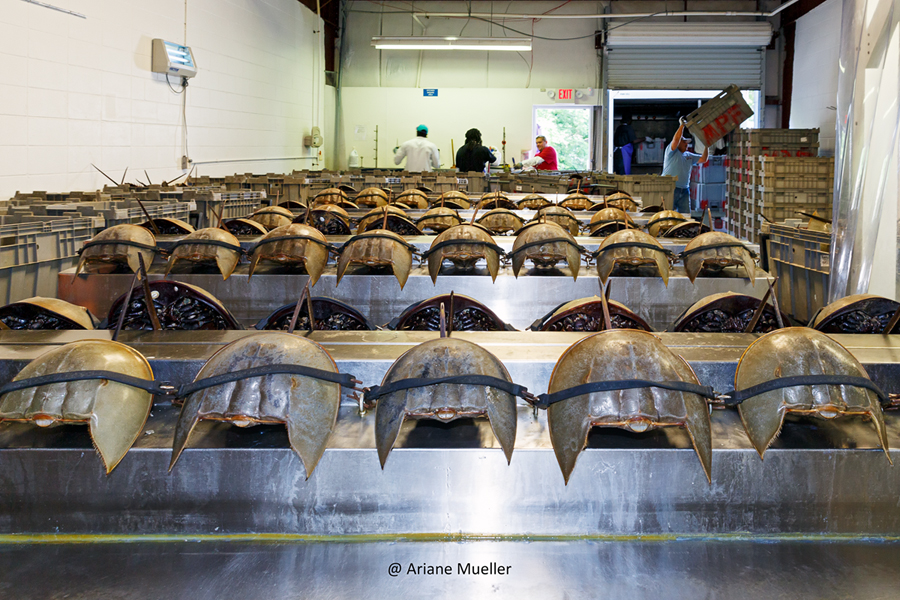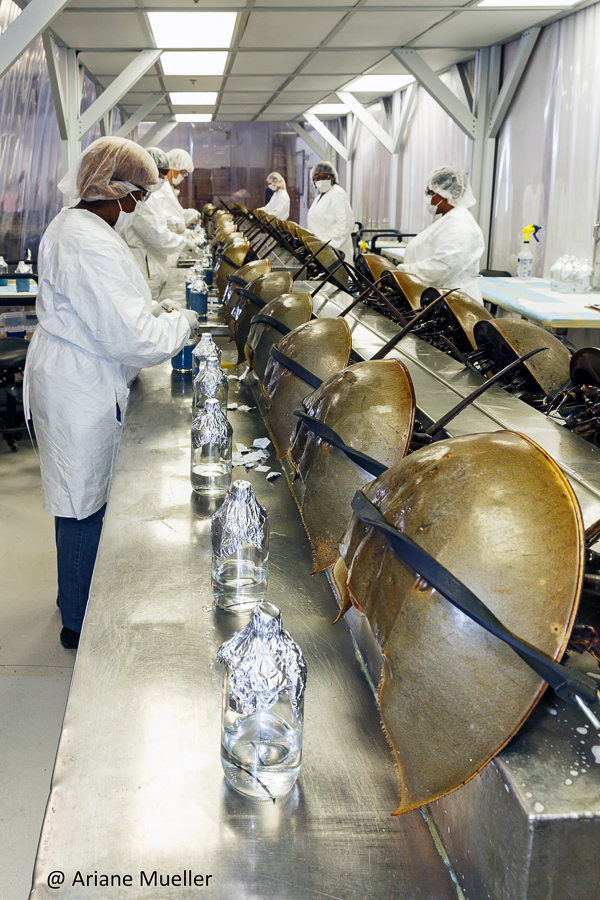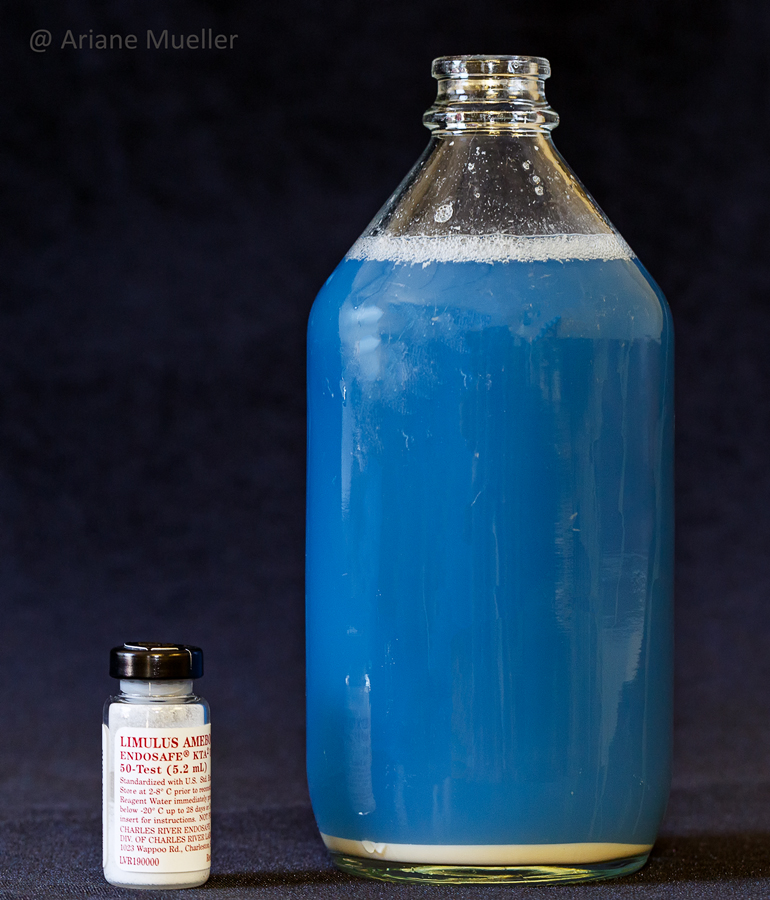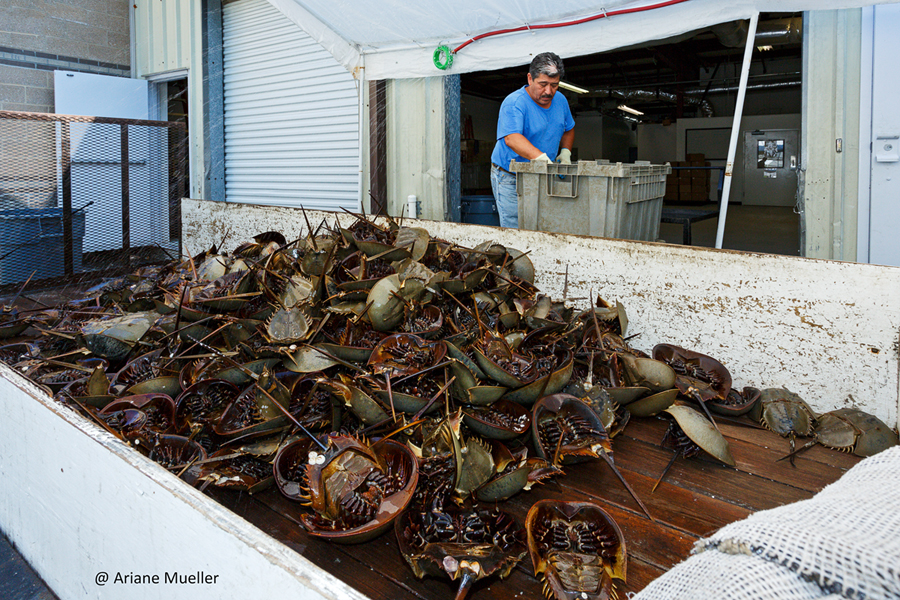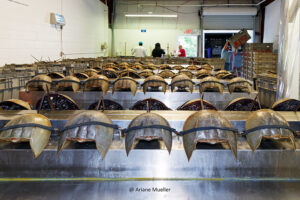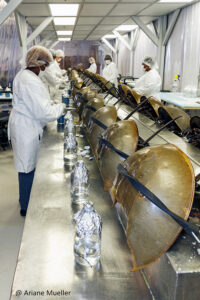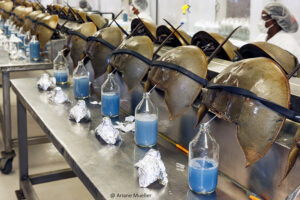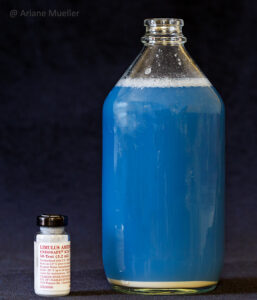Protecting Health
Bacterial Endotoxin Test Manufacturing
Those who purchase LAL or TAL and all of us who are helped by the blood from horseshoe crabs can and should know how each manufacturer collects and handles the animals that are used in their bleeding facilities. End-users of horseshoe crab-based endotoxin detection methods, and patients benefitting from them, can help play a role in horseshoe crab conservation by demanding that best practices be used as well as development of methods to reduce or eliminate the need to bleed horseshoe crabs.
Manufacturing of LAL and TAL requires that horseshoe crabs are collected, handled and bled. Collection, handling and bleeding practices vary from one manufacturer to another, but most agree that some practices are less harmful to the animals than others.
Hand-collection vs. Trawling
Collection practices in the United States include picking up crabs from the beach by hand, hand collecting from shallow water, and trawling for crabs miles off shore with a fishing boat. Each method has its benefits and disadvantages. Taking crabs at or close to shore may impact spawning activities and/or disrupt nursery grounds. Trawling uses fishing nets to collect the crabs. Although not directly impacting spawning, the nets may cause damage to some of the horseshoe crabs and may disrupt their ocean floor habitat. Debate exists within the community as to which is the best collection practice.
The Bleeding Process
Best practices for handling the horseshoe crabs through the bleeding process include keeping the crabs cool and moist, pre-screening and not bleeding injured crabs, and separating unbled from bled within the facility to avoid rebleeding.
Bleeding the horseshoe crab involves bending them at the hinge between the larger (prosoma) and smaller (opisthosoma) sections and placing them in a rack. The best practice is inserting a sterile needle through the membrane in the hinge and allowing blood to flow or drip into the container until the flow stops naturally. Bleeding horseshoe crabs to death is not an acceptable practice in the U.S.
The volume of blood taken is actually quite small, as most of the material in the collection jars is anticoagulant.
Swift Return
Returning horseshoe crabs to the ocean waters from which they were taken within 24 hours is a best practice. Crabs are often marked prior to return in order to identify and avoid collecting them a second time for bleeding within a year. Some manufacturers bleed horseshoe crabs prior to their use as bait. Debate also exists as to whether or not bleeding bait crabs is a best practice.
As with harvesting, the crabs should be returned to the ocean in a moist, climate-controlled vehicle to reduce stress and they should be returned to their harvesting site.
In the U.S., best manufacturing practices are discussed at meetings held in conjunction with the Atlantic States Marine Fisheries Commission (ASMFC, www.asmfc.org). The ASMFC and its horseshoe crab management plan and advisory group are working together with the LAL manufacturers to help protect the sustainability of this natural resource.

